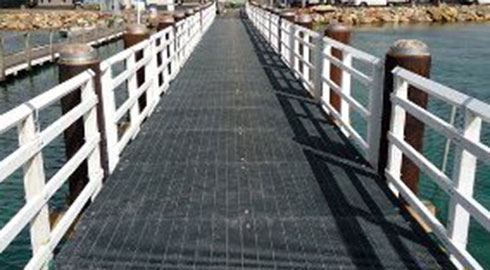
Marinas, wharves, pontoons and boardwalks all have access platforms that are elevated over the water surface and induce shading impacts on aquatic flora and fauna that live below these structures. This negatively impacts organisms that need access to sunlight to survive – most notably being seagrass, but also other fish and invertebrates whose preference is for a more lit environment. Shading can therefore favour the colonisation of non-native species in these areas (Dafforn et. al. 2012).
.JPG)
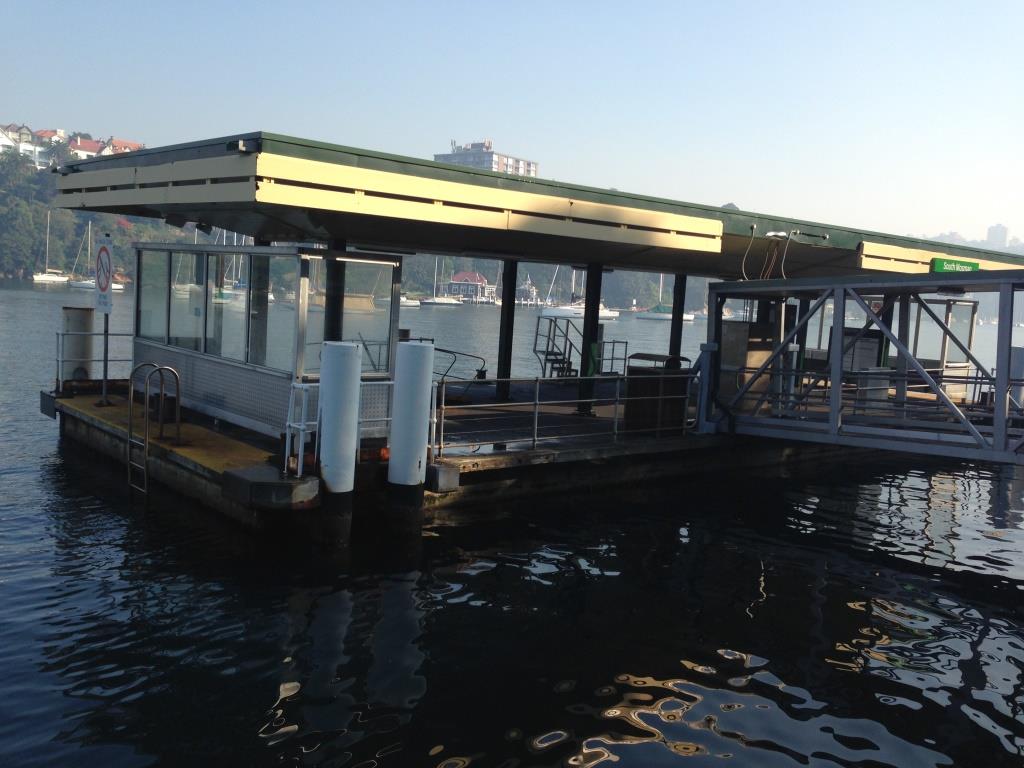
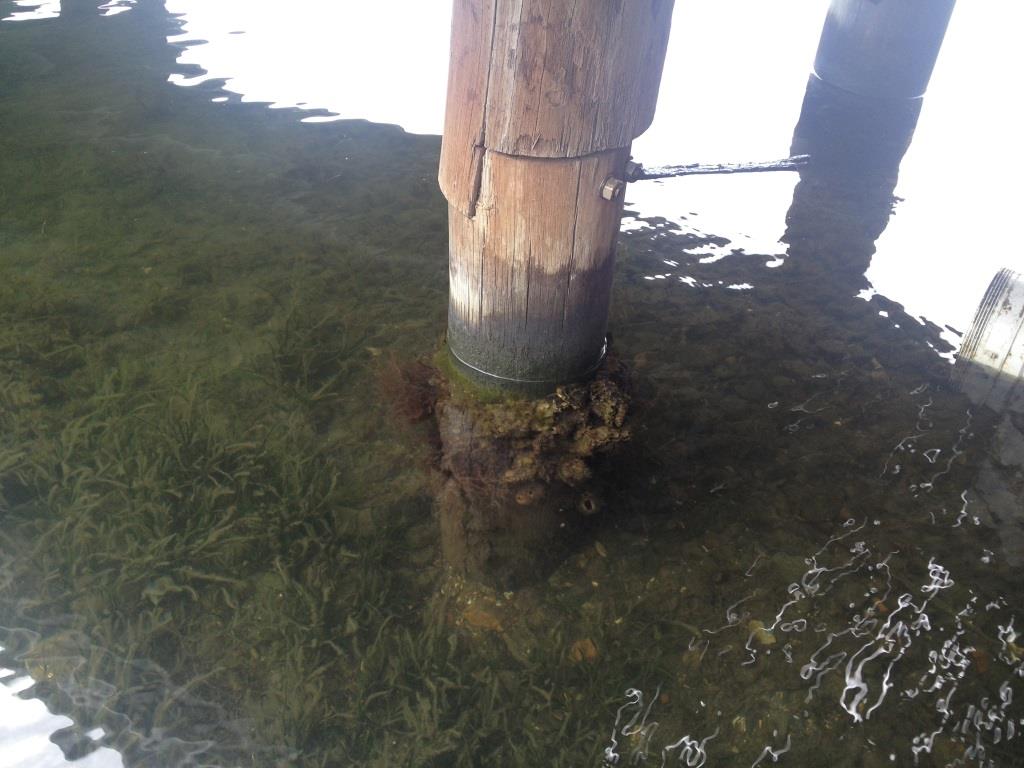
Shading impacts from solid deck pontoon, ferry terminal and jetty
By their nature Marinas provide a number of services to the boating community that could negatively impact on aquatic flora and fauna if not managed correctly.
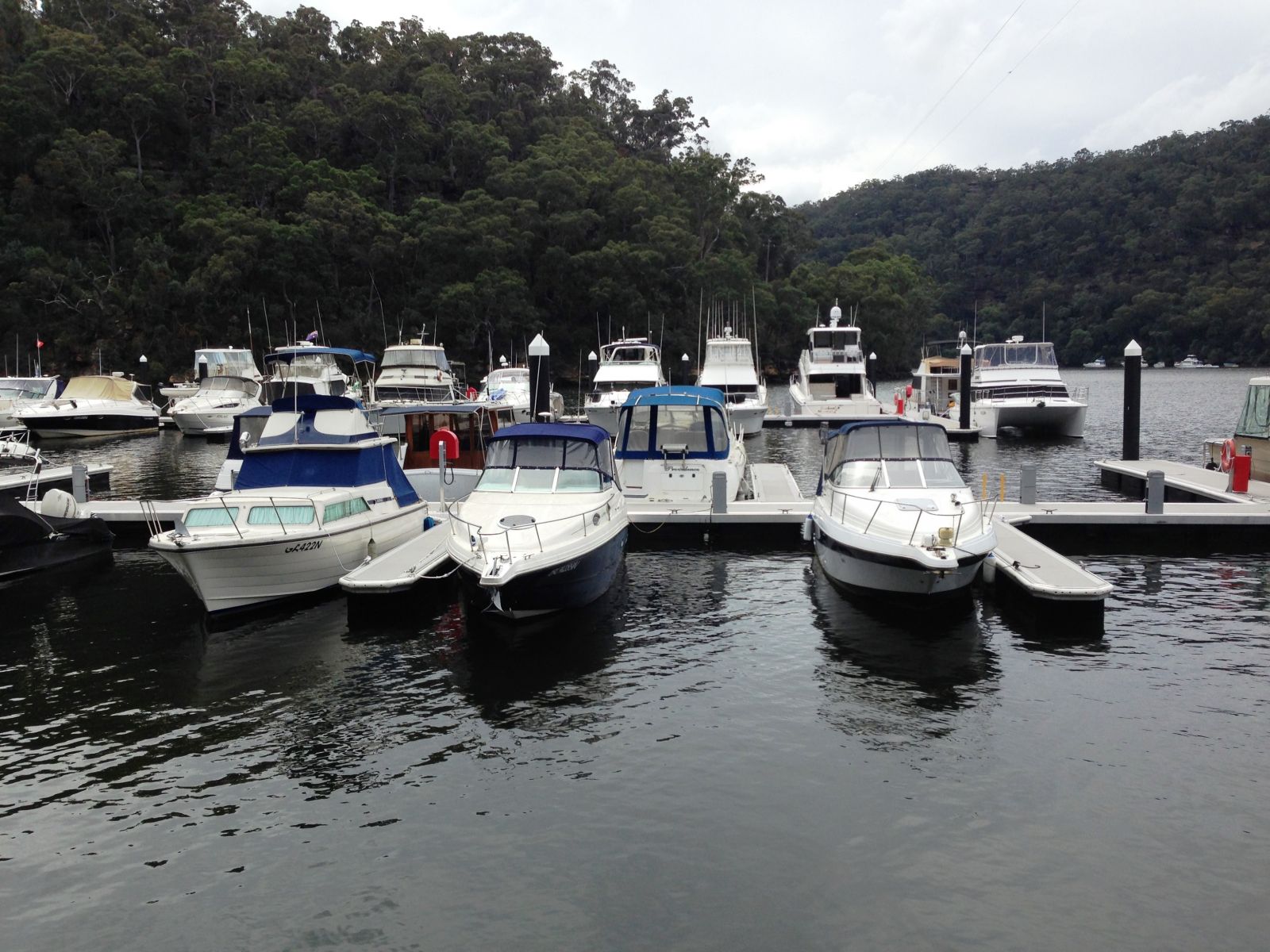
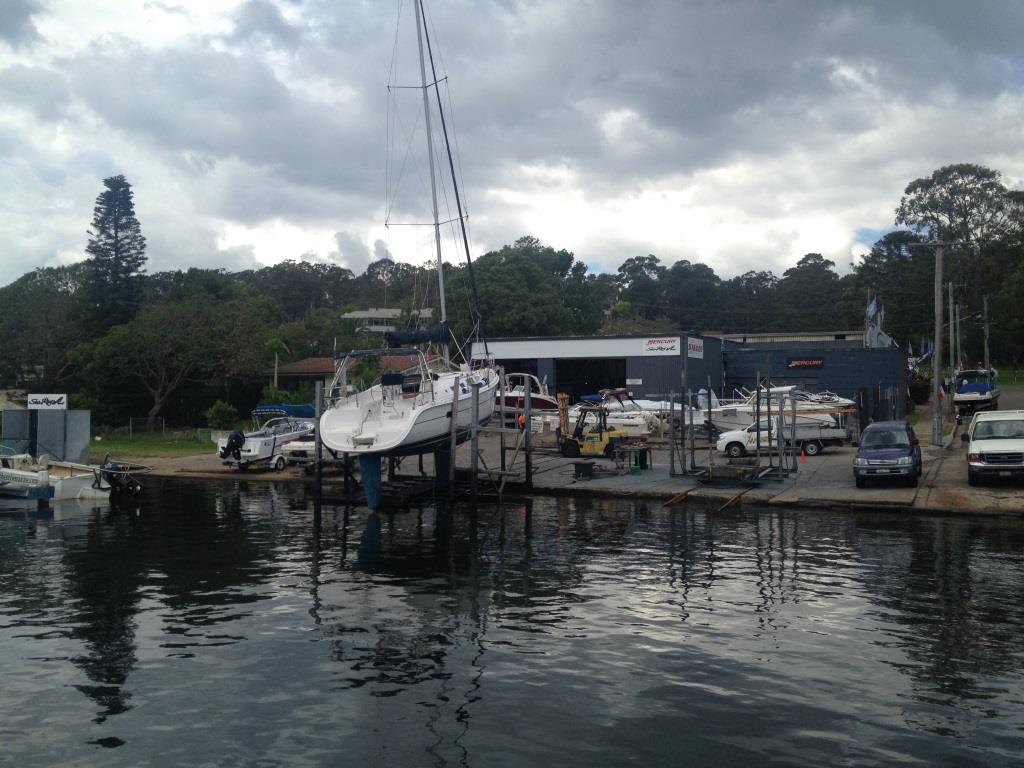
Moored boats can create shading impacts, access structures provide little complexity, boat maintenance yards can pollute waterways if not managed correctly
Flat vertical surfaces reduce the opportunity for invertebrates, sponges, corals and algaes to colonise, potentially reducing food sources for fin fish.
Domestic and international vessels pose a risk to Australia’s marine environment by spreading marine pests.
Bilge water, stormwater, runoff from washdown areas and poor management of hard wastes (plastics etc) can add pollutants to the marine environment like heavy metals, nutrients, acids, oils, plastics and paint strippers, causing serious problems for marine life. Accidental release of fuel, oil and other chemicals can also be caused by fire. As well as the damage to boats and infrastructure, the chemicals that result from burning plastics and other materials can be highly toxic.
The solution
Reducing the impacts of the physical structures associated with wharves, pontoons, boardwalks and marinas, along with the way boats and materials are managed within or near the marine environment will improve the health of aquatic organisms and will have positive flow on effects for boat enthusiasts and recreational fishers.
Modifications to access structures that increase opportunities for intertidal species to thrive, inclusion of structures below the water's surface that create complexity and use of materials that allow light to penetrate through structures that sit on or above the water’s surface will all be beneficial.
Marinas that are constructed on the landward side of the coastline, through excavation of a harbour, or those that are surrounded by breakwaters on the ocean side and seawalls on the landward side can improve biodiversity by applying principles of Environmentally Friendly Seawalls into the rock walls that surround the marina. Saltmash benches, steps for mangroves to colonise and rock pools could all be incorporated to improve biodiversity and the aesthetic compared to standard rock revetment.
.jpg)
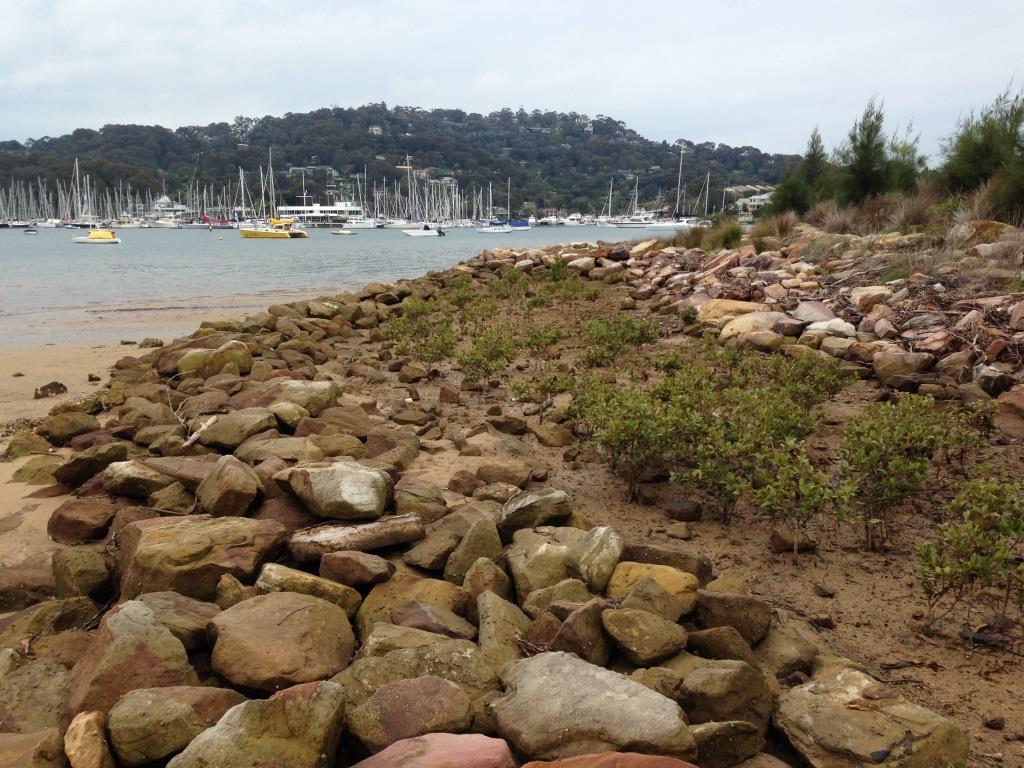
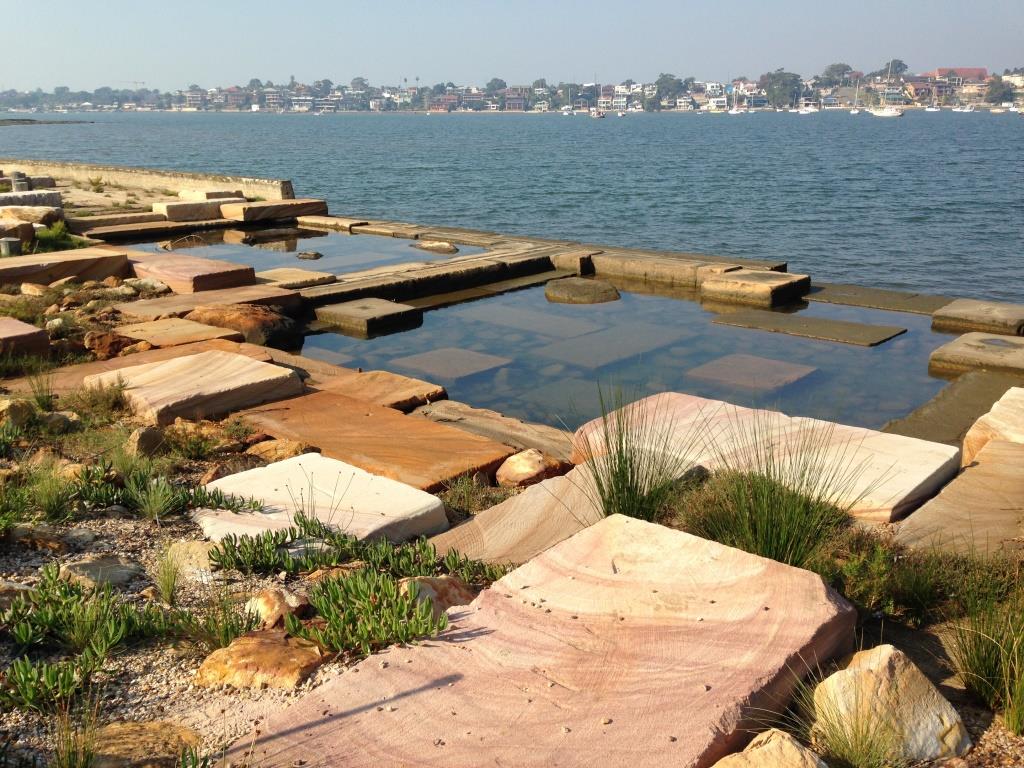
Saltmarsh benches, sections for mangrove growth and rock pools could all be incorporated into seawalls aurrounding marinas to improve biodiversity
Public infrastructure, private jetties and access points within marinas can use of light penetrating materials such as aluminium mesh decking, glass blocks, or skylights/clear Perspex to encourage light loving marine life like seagrasses and algaes to grow below the them. These materials can allow users to see the water and marine life below them, creating an improved connection with the environment and a more pleasant experience.
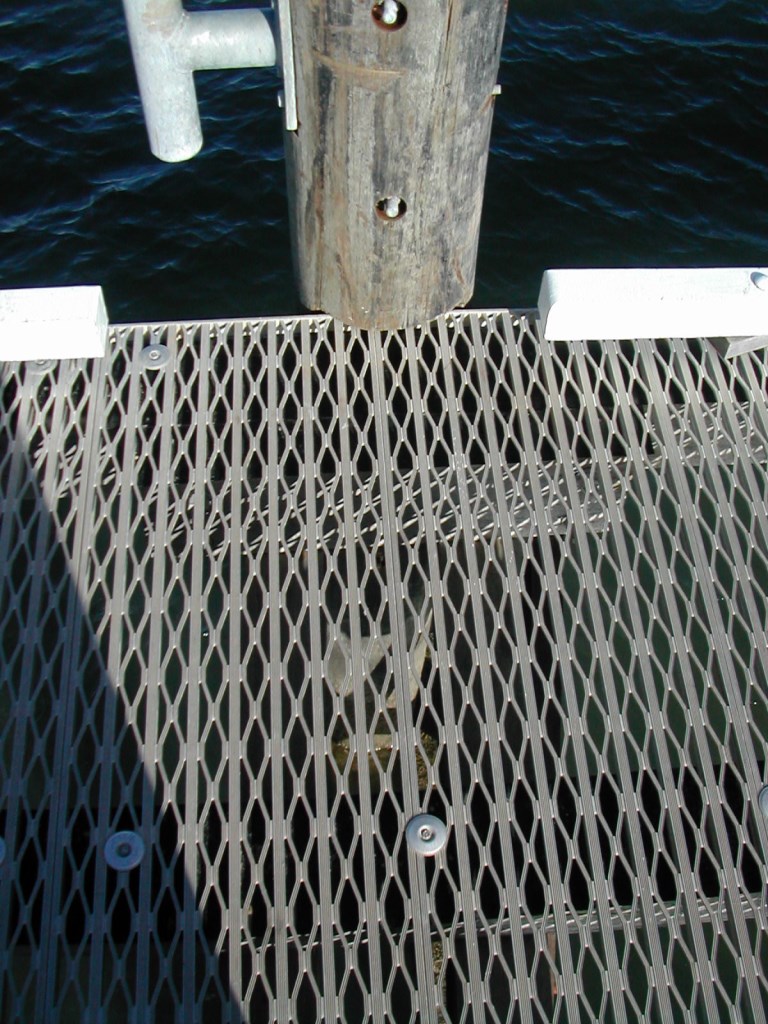
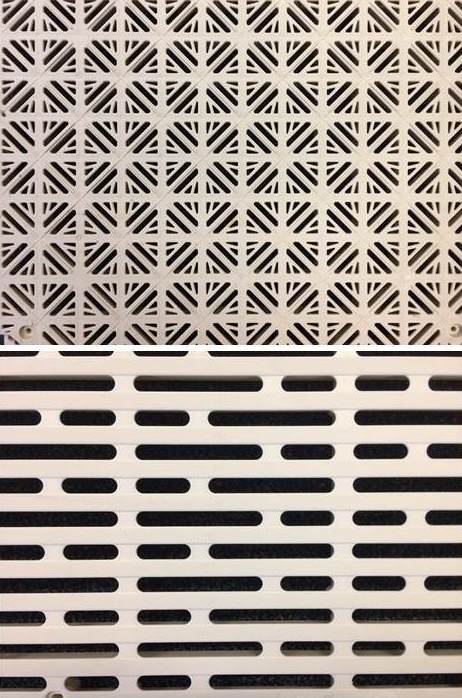
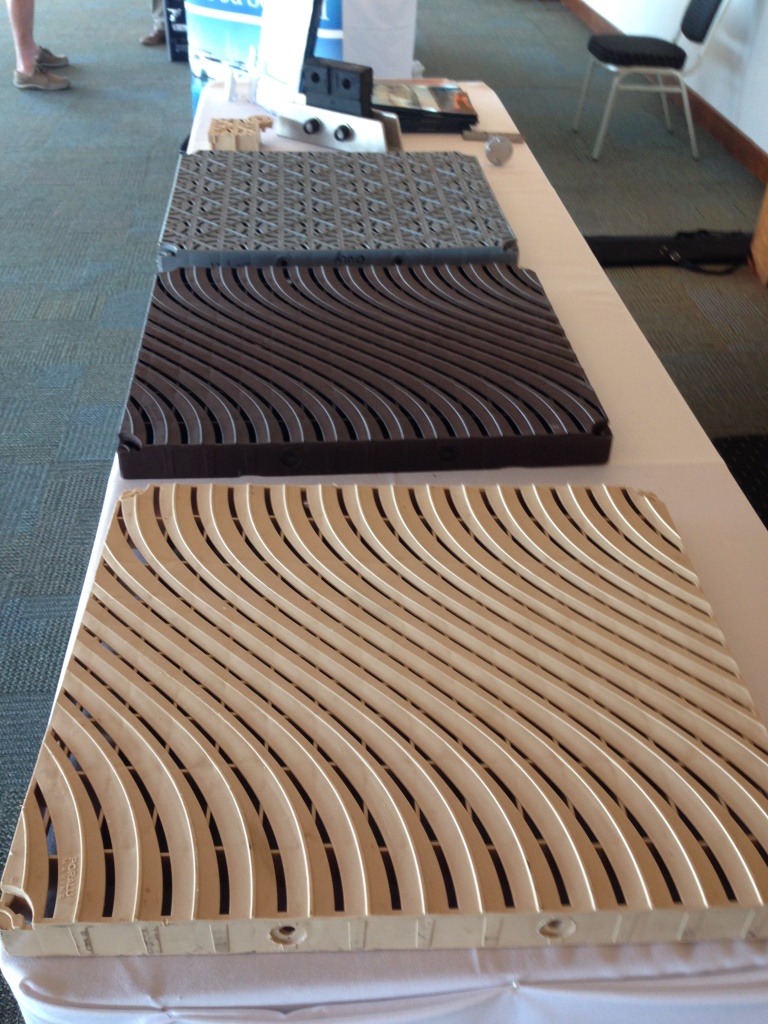
Aluminium mesh deck jetty. Different light penetrating treads are available to create a more "designer" effect (centre bottom by ThruFlow, panels on right by Poralu Marine)
Pontoon skylight mockup (modified from patent and patent). Artist's impression of Seattle waterfront wharf redevelopment including installation of light penetrating surfaces in the pedestrian walkway and subsurface structure attached to the seawall's vertical face.
Along with improved light penetration, biodiversity could be improved below surface structures through the addition of complex panels to vertical surfaces in a similar manner to retrofitting seawalls. These create places for invertebrates and small fish to escape predators, and a greater surface area for colonisation by invertebrates, sponges, corals and algaes. Structures could also be floated from the seafloor or suspended from surface structures to increase habitat opportunities and encourage a wider range of flora and fauna to colonise.
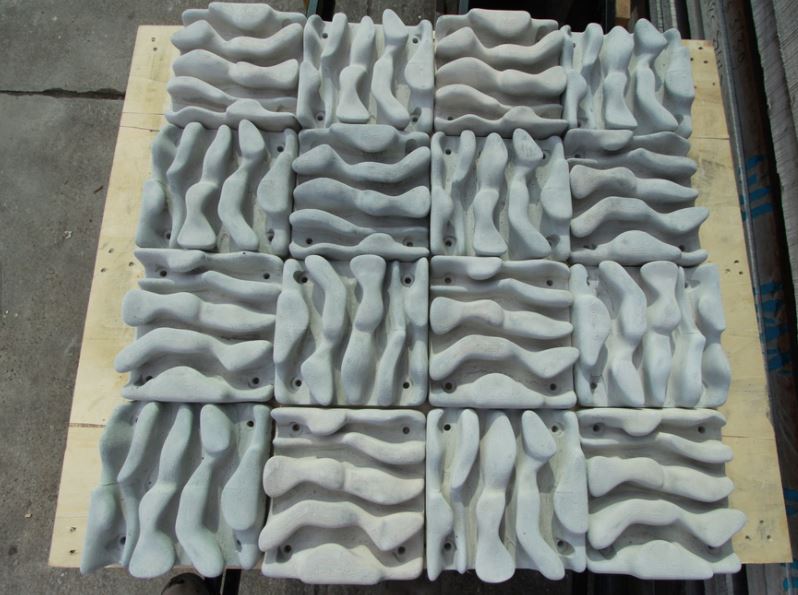
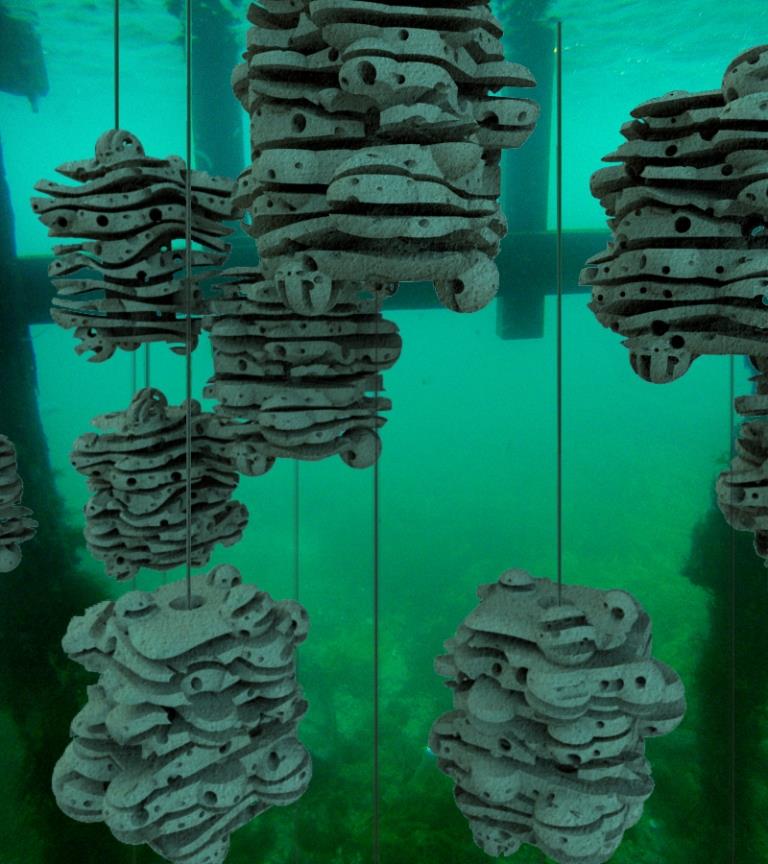
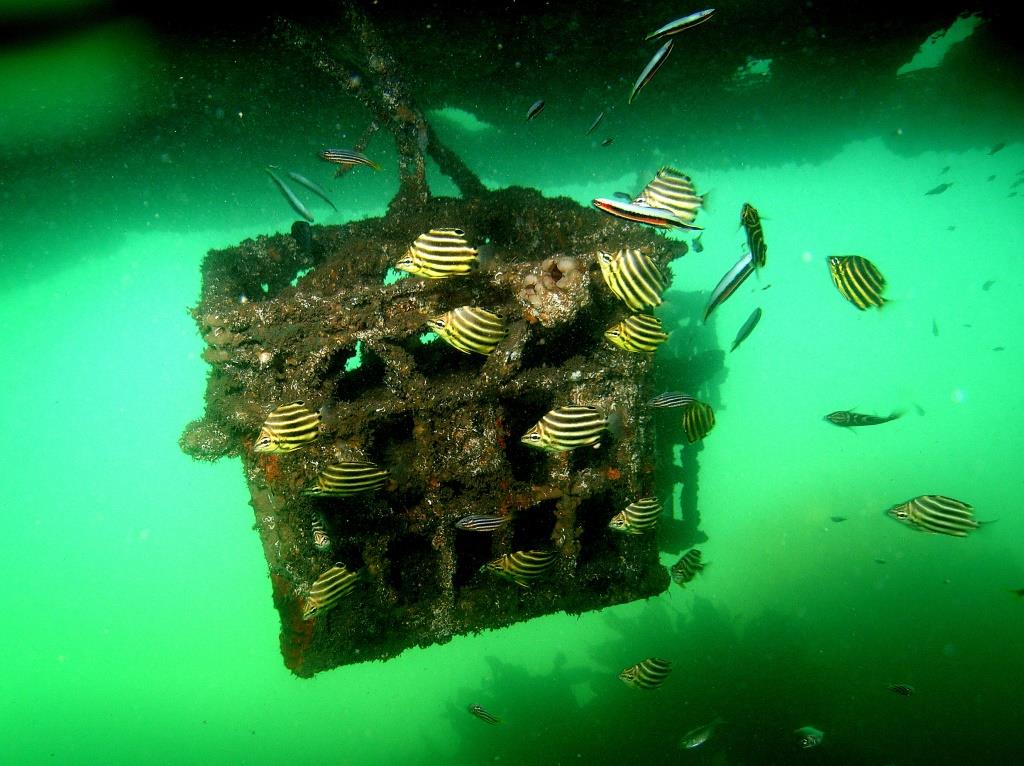
Complex panels could be attached to upright surfaces, floating reefs (centre) or other hanging structure (right) would increase complexity and encourage greater biodiversity (images courtesy of Reef Design Lab and Jack Hannan)
Reef Design Lab and the Sydney Institute of Marine Science have developed and monitored innovative designs that increase habitat complexity. These include bolt on panels mentioned above and 3D versions of these panels that are rock-like floating or suspended “hanging reefs”. The University of Technology, Sydney and Transport for NSW have trialled hanging milk crates under wharves to increase structural complexity.
To address potential impacts from marine pollutants including accidental release of fuel, oil and solid wastes, the Marina Industries Association has established an International Clean Marina Program, which is a voluntary accreditation system for marinas, yacht and boat clubs, slipways, boatyards and associated industry operators. The goal of the Clean Marina Program is to reduce ‘non-point source pollution’ associated with boating/marina facilities and to promote clean water, clean air and thriving marina industry businesses.
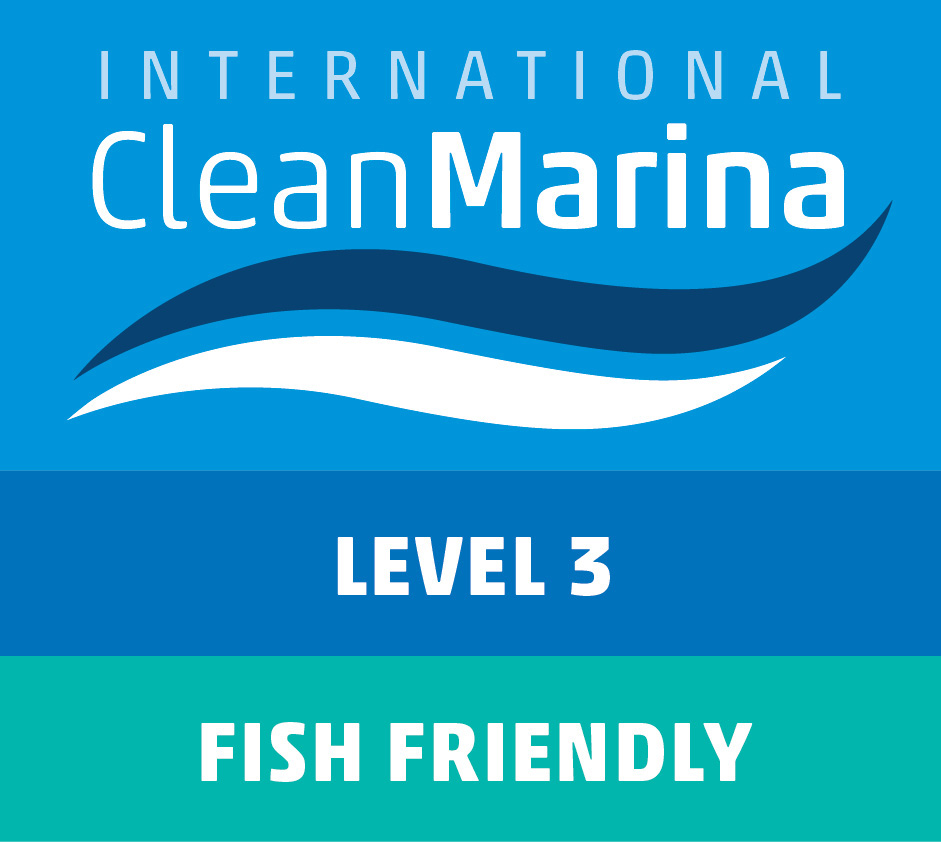
Level 3 of the Clean Marina Program accreditation includes elements relating to being “fish friendly”. This joint initiative of the Marina Industries Association of Australia and Fisheries NSW encourages a fish-friendly marina to provide a range of services to their boating and fishing customers in ways that minimise impacts on fish and fish habitat.
Being “fish-friendly” means that operators or customers might see some things done slightly differently from other marinas. Small changes can make a big difference to the health and wellbeing of local fish and fish habitat and may provide your business with a competitive edge by promoting your involvement in these activities.
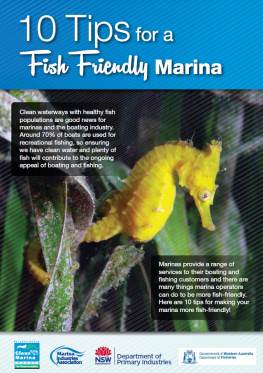
Improved disposal of liquid and solid wastes, bunded refuelling stations and adequate and up-to-date pollution response equipment and procedures will help reduce the potential for chemical spills and their impacts on the marine environment. Inclusion of physical modifications mentioned above will improve biodviersity and provide a better experience for your customers.
For more information, click on the image or see the links below to contact the Marina Industries Assoication and view the "10 Tips for a Fish Friendly Marina" booklet and customer brochure.
Environmentally friendly seawalls
| Organisation | NSW Department of Primary Industries (Fisheries) |
|---|---|
| Contact | Scott Nichols ph:(02) 6626 1396 e: [email protected] |
| Funding Body | NSW Environmental Trust |
Resources and references
Dafforn, K.A., Glasby, T.M., and Johnston, E.L. (2012). Comparing the invasibility of experimental “reefs” with field observations of natural reefs and artificial structures. PLoS ONE. 7: e38124.
"Fish habitat in downtown Seattle" - breakdown of survey work conducted on effectiveness of light penetrating surfaces (glass blocks, mesh grate and solar tubes) minimising shading impacts on juvenile salmon's ability to move and feed.
"Seattle seawall’s novel fish features are a potential model for the world" - University of Washington's article on the project.
Derbyshire, K. (2006). Fisheries Guidelines for Fish-Friendly Structures. Department of Primary Industries, Queensland. Fish Habitat Guideline FHG 006, 64 pp. Includes information on additions that could be made to wharves and jetties to improve aquatic biodiversity.
Marina Industries Association International Clean Marinas program
NSW DPI Fisheries Fish Friendly Marina information including 10 Tips booklet and customer brochure
"Healthy Waterways - better boating, more fish" brochure
Roads and Maritime Services and NSW DPI Fisheries – Caulerpa taxifolia and general weed and pest management:
NSW DPI Fisheries - caulerpa-taxifolia